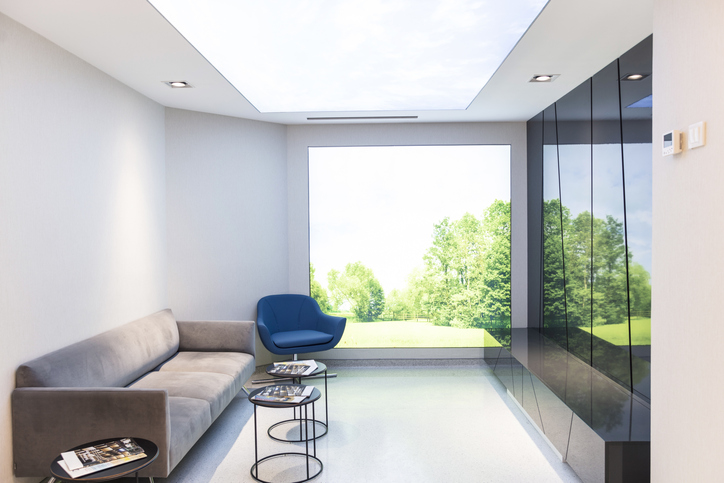An episiotomy is a procedure that can change the shape of the eyes to bring them closer to your ideal, but many people are concerned about the scarring that will remain after the surgery. HereIn the following section, we will provide basic information on craniotomy, the causes of scarring, and details on how to minimize it.
Our goal is to provide useful information for those considering surgery and to help you feel more comfortable with the procedure. As you continue reading, you will find answers to your questions and become more knowledgeable about craniotomy.

Graduated from the Faculty of Medicine, National Kumamoto University. After serving as the director of major beauty clinics in Japan, etc., he opened Aladdin Aesthetic Clinic in 2023. He is a professional in aesthetic medicine with a doctorate in anti-aging research and many years of experience. With the motto of "Toward the realization of cosmetic medicine without lies," he aims to be the "Only One" together with his patients.
What is a craniotomy? Basic Information and Purpose

An eyelid incision is one of the most popular procedures in cosmetic surgery. This procedure involves incising the inner corner of the eye to create a larger, more attractive eye.
The surgical procedure depends on the expertise and the shape of the patient's eyes, but is generally performed under local anesthesia and takes about 30 minutes to one hour.
Enlargement of eye width and improvement of facial impression
An incisional eye surgery is a cosmetic surgery technique that focuses on the aesthetics of the eyes. The primary goal of this procedure is to delicately incise the inner corner of the eye to naturally widen the eye. This has the effect of making the eyes appear larger and more defined and improves the overall balance of the face.
The surgery may not only make the eyes appear larger, but may also help the face shape to be more balanced and harmonious, enhancing the overall beauty of the face. The surgery is also applicable to many people of all ages and genders and is customized to individual facial features.
The ideal facial balance for an incision is said to be 1:1:1, where the width of the eyes and the distance between the left and right eyes are the same, which is said to be the ideal ratio for a beautiful appearance.
Increased self-confidence and social impact
A common outcome after craniotomy is that many patients report an improvement in their confidence in their own appearance. The brightening and opening of the eye area resulting from surgery will often improve self-image, which in turn will have a positive impact on daily life and social activities.
For example, it is expected to improve the quality of their social life, such as enabling them to communicate more confidently at work and in interpersonal relationships. We have the impression that many people are considering this service at the time of some kind of environmental change, especially during the graduation season or when they are about to change jobs.
Do craniotomy incisions leave scars? How to manage scars and what are some techniques to minimize them?

The main causes of scarring from craniotomy are largely dependent on the patient's skin type, surgical technique, and postoperative care. By taking measures to address each of these factors, scarring can be minimized.
Individual skin type
People have a wide variety of skin types and the healing process of scars varies from person to person. If the skin is sensitive, there is also a tendency for scars to remain. Therefore, the physician must conduct a detailed analysis of the patient's skin condition in advance and develop a surgical plan tailored to the individual skin type. This includes taking into account the skin's elasticity, thickness, and tendency to pigmentation. The selection of specific incision and suture techniques to reduce the appearance of scars is important for proper surgical planning.
surgical procedure
Precise surgery by an experienced physician is essential to minimize scarring. In addition, tissue damage and downtime can also be greatly affected by the surgical incision method and the delicacy of the sutures.
There are two main surgical methods for craniotomy: the W and Z methods.
The W method is a surgical procedure suitable for those who wish to drastically change the image of the eye area. In this technique, the skin is not merely incised, but the necessary areas are removed to achieve a wide range of impressions of the eyes, from minute adjustments to bold changes. the W method uses incisions similar to the letter W in the alphabet, and can be used to achieve a natural-looking result, especially when combined with a double-layer procedure.
One disadvantage of this method is that it requires a longer recovery period (downtime) than the Z method. In addition, because the skin is removed, it is difficult to return to the preoperative state, but scars tend to become less noticeable, usually in about six months. However, postoperative revisions are difficult, so careful consideration is required.
The Z method, on the other hand, does not remove the skin, but instead makes an incision and replaces the skin. An incision similar to the shape of the letter Z is made and the skin is sutured, resulting in a change in the eye area. The major advantages of this method are less scar redness and swelling and a shorter recovery period compared to the W method. In addition, since the skin is not removed, postoperative revisions are possible and flexible.
However, the Z method is relatively modest in its visible changes and may not be suitable for those seeking a major image change. Some adjustments can be made by applying the inverted Z technique postoperatively, but if you are looking for a strong change, it is worth considering other methods.
Proper postoperative care
Postoperative care is critical to scar healing and cosmetic outcomes. Postoperative care includes proper disinfection and wound protection, appropriate use of anti-inflammatory medications, adequate moisturization, and protection from UV light.
It is especially important to avoid infection and maintain proper humidity in the scar area. This requires clean care according to the doctor's instructions and the correct use of specified medications. In addition, special attention should be paid to ultraviolet rays in the weeks following surgery, and the use of sunscreen and the utilization of parasols and hats are also effective. These measures prevent scar pigmentation and support a clean recovery.
Recovery process after craniotomy surgery

An episiotomy is a surgical procedure in which the skin is removed and sutured. Although the length of downtime varies from person to person, the scar from an episiotomy gradually becomes less noticeable after the stitches are removed, and in most cases is barely visible after about three months. During the recovery period, it is important to take proper care of your skin and wait for recovery without rushing.
The general recovery process is as follows
Day of Surgery
Immediately after surgery, the treated area may be red and swollen, and sutures may be visible. There will be some pain, but it can be managed with pain medication. Resting with the head elevated is an effective way to reduce swelling.
Around 1 week after surgery
Stitches are removed approximately one week after surgery. At this point, most of the redness and swelling will have subsided, and you will be able to wash your face, take a bath, and apply makeup the day after the stitches are removed. However, the wound has not yet completely healed, so care should be taken to avoid irritation.
One month after surgery
The redness is almost completely gone and is often even less noticeable with makeup. By this time, the scars are usually no longer noticeable.
3-6 months after surgery
During this period, the scars will naturally blend in and become almost invisible. The time it takes to become completely invisible varies from person to person, with some people taking as little as one month to clean up quickly, while others may take up to six months.
Long-term care and regular checkups

Long-term care and regular checkups after craniotomy surgery are essential to maintain the effectiveness of the procedure and ensure a healthy recovery. It is important to see your doctor on a regular basis to properly manage your post-surgical process and prevent potential problems. This will allow you to receive additional care as needed and will support an optimal recovery process.
In addition, as mentioned above, it is advisable to take sun protection measures and protect the scar area from UV rays, especially immediately after surgery, as there is a risk that the scar will be aggravated by UV rays. Of course, daily use of appropriate skin care products and moisturizing, as well as a nutritious diet and good sleep, will help maintain skin health and good scar recovery.
These long-term care procedures also play an important role in maximizing and sustaining the cosmetic effects of the surgery.
summary
The following is an overview of important points to minimize scarring after craniotomy surgery. It is important to approach all aspects of the procedure, from the technique, to pre- and post-operative care, to long-term care. We hope that it will be of some help to those who are pre-considering a decision in cosmetic surgery and lead them to a better outcome. If you need further information or advice, please take advantage of our consultation.
At Aladdin Aesthetic Clinic, based on our many years of experience in cosmetic medicine and cosmetic dermatology and the knowledge of our doctoral degree, we provide counseling that aims to be "only one", offering the best treatment for each person we meet. We offer only the necessary treatments without any unnecessary information or suggestions.
Feel free to use our official LINE account for 24-hour counseling and reservations. Please feel free to contact us for free counseling for the first time or if you have any concerns.





